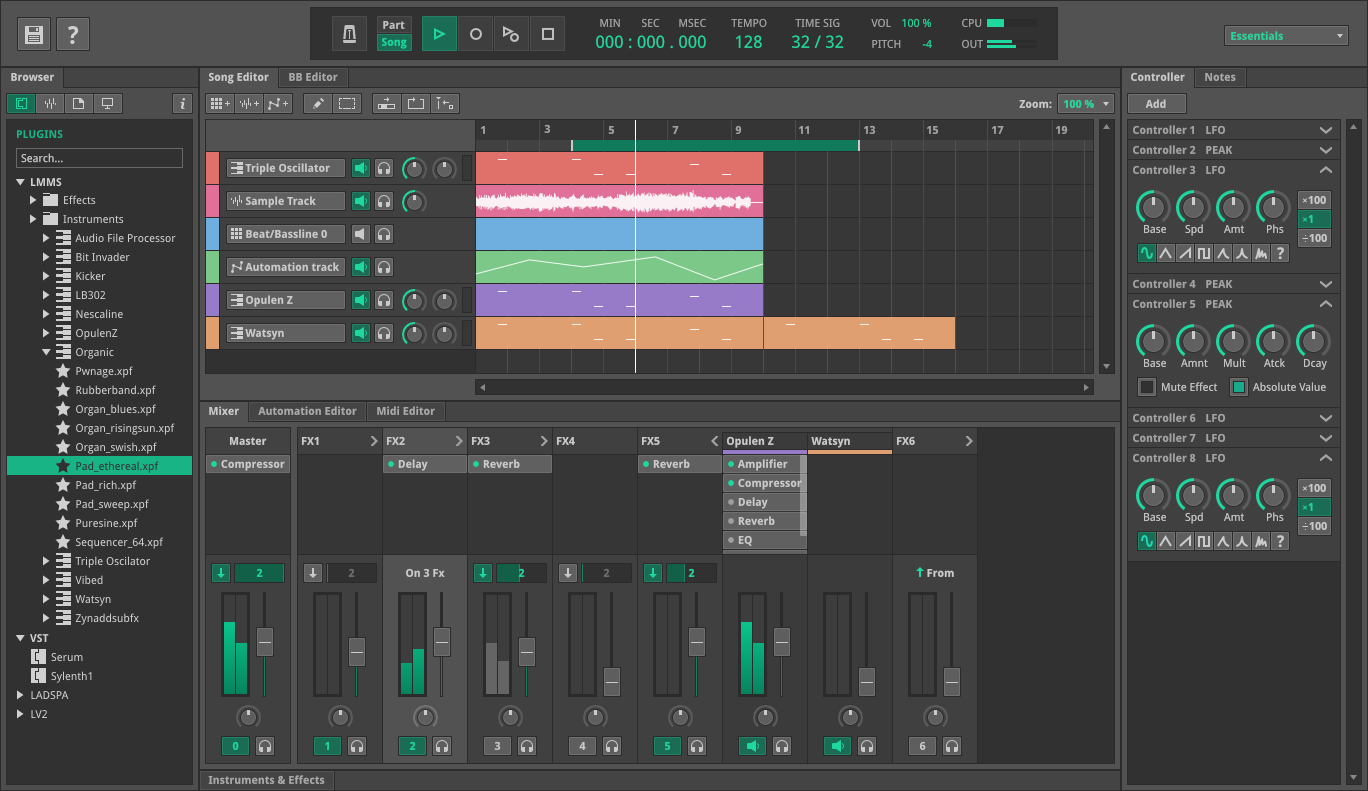IMHO realizing that drawing similar to the way Blender's UI works (see edit) would be a really nice solution to both problems you listed. However I believe Blender uses some tightly coupled Python code for it's UI, so I don't now whether it could just be dropped into LMMS or had to be written from scratch.
EDIT: Just to be clear: I'm mainly referring to the way Blender allows for rearranging the window "areas" (editors), not necessarily to the other stuff.




 is a synth design I'm working on. It could do with some tart. The limits are, the knobs must have the same centres and diameters, and be equally spaced. (the last 3 on each row maybe a pixel or so out. And an icon 48*48 too.
is a synth design I'm working on. It could do with some tart. The limits are, the knobs must have the same centres and diameters, and be equally spaced. (the last 3 on each row maybe a pixel or so out. And an icon 48*48 too.
(Click to enlarge)
Hi all, My previous work for Zynaddsubfx has same purpose to dock all windows in one (link is dead)
http://budislavtvp.deviantart.com/art/ZynAddSubFX-UI-Concept-2014-455890191It is in development phase > https://github.com/fundamental/zyn-ui-two
Link to full concept:
http://budislavtvp.deviantart.com/art/LMMS-UI-UX-Design-Concept-Single-Window-523696539https://www.behance.net/gallery/38503021/LMMS-UIUX-Design-Concept-Single-Window-Interfacehttps://www.behance.net/gallery/194917259/LMMS-Redesign-ConceptFull version (mirror): full version